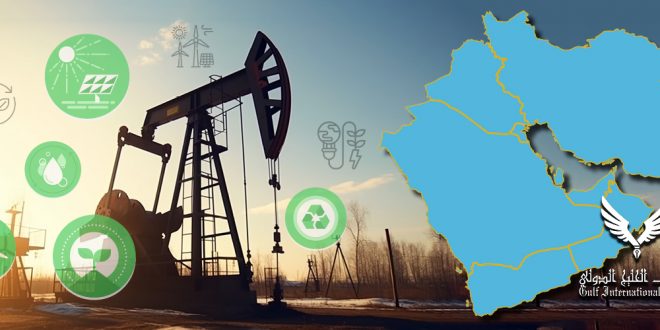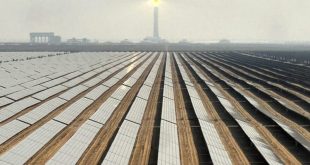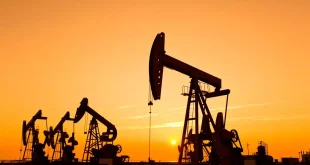In 2024, the Gulf’s energy sector is poised at a critical juncture, balancing the traditional reliance on hydrocarbons with ambitious strides toward renewable energy and economic diversification amidst global economic fluctuations and regional geopolitical tensions.
The Middle East played a significant role in the global energy market in 2023, navigating the delicate balance between the transition to renewable energy and the world’s continued reliance on conventional hydrocarbons. Unexpected events, such as economic deceleration, altered initial projections, impacting the region’s oil-dependent economies. Looking ahead to 2024, the Middle East’s energy sector must grapple with climate change and diversification challenges, but will also seize opportunities for technological advancement, international cooperation, economic diversification, and the expansion of renewable energy. Through international initiatives, the region is actively upgrading its energy sector, emphasizing efficiency and sustainability with the goal of transitioning to a more robust and sustainable energy environment.
The forecasts of the global oil market in 2024 will invariably differ from initial assumptions. In the final quarter of 2023, many analysts originally predicted a $90 oil price, but this estimate was soon made inaccurate by economic slowdowns around the world—particularly in China—which resulted in decreased oil consumption and increased stockpiles there. Japan, India, and the United States all also saw decreased oil demand, which many analysts failed to predict. Considering the Middle East’s energy market for 2024, global oil price fluctuations will impact the economies heavily reliant on oil, influencing strategic decisions in the energy industry.
The Gulf’s progress in long-term development goals in 2024 hinges on strategic investments in hydrogen and renewable energy by Gulf Arab countries. Their aim is to increase oil output, produce oil with lower carbon output, and diversify sources of GDP and government revenue away from the oil and gas industry while minimizing environmental impact. While Iran faces a potential energy crisis without effective consumption management, the other Gulf nations each anticipate increased exports and accelerated energy transitions for economic growth. However, regional tensions, Houthi attacks, and uncertainties related to Iran, Israel, and the U.S. contribute to oil price volatility.
Oil Forecasts
Most analysts agree today that global demand for oil is likely to increase in the near future. According to the International Energy Agency (IEA), the demand for oil is expected to rise slowly worldwide in 2024, growing 900,000 barrels per day (b/d) by the end of the year. This prediction will be impacted by several variables, including the structural effects of growing fleets of electric vehicles and the slowing post-COVID boom. OPEC, on the other hand, has updated its forecast for increased oil demand in 2023 to 2.46 million barrels per day, exceeding the IEA‘s more cautious 2024 estimate. The difference in projections highlights the continuous discussion between the two parties over the long-term direction of oil use. The estimate from the IEA highlights how a weaker macroeconomic climate affects global oil demand and how structural issues are becoming more and more important.
With voluntary production reductions intended to maintain OPEC+’s output 1.3 million barrels/day below projected demand, the alliance is expected to sustain an oil market deficit. However, the IEA‘s prediction raises the likelihood of a market surplus in 2024 because of the significant influence of structural variables on market dynamics, as well as the possible slowdown in the development of oil demand.
Oil output in the Gulf Cooperation Council (GCC) is expected to rise by 0.8% in 2024, following a 2.8% decrease in 2023, per the IEA. This expansion is essential to the economies of the area and fits well with the GCC’s continuous efforts to diversify its economy. The GCC economy is predicted to improve in 2024 because of the projected increase in oil output, which will also support strong non-oil activity and general hydrocarbon stabilization. Several countries are experiencing slower development and worse financial conditions because of the ongoing Gaza war; if the fighting worsens, once consequence might be a negative effect on energy prices. Notwithstanding these obstacles, the region’s non-oil industries are making great strides that are favorably affecting the expansion of the economy.
The goal of the OPEC+ agreement is to influence global oil prices and optimize the value of member nations’ oil reserves—by reducing oil output by one million barrels per day beginning in January 2024. In contrast, the United States’ well-functioning and market-driven oil industry is expected to propel the country to a global record of 13.3 million barrels per day of crude output in 2024. This increase in U.S. production can affect the dynamics of the world oil market and offset the benefits of OPEC’s production curbs. The continuous relationships between U.S. oil output and OPEC+ are anticipated to have a major role in determining the structure of the world oil market in 2024.
Oil Dynamics on Saudi and Iranian Economies
Saudi Arabia has decided to continue its unilateral reduction in oil output by one million barrels per day (b/d) through the first quarter of 2024. Nonetheless, it is projected that Riyadh will progressively raise its oil output, with an annual increase of 0.8% predicted by 2024. This follows a 7.0% decline in oil output in 2023. The country’s 2024 GDP growth estimate has been lowered as a result of decreasing oil output following OPEC+ cutbacks. In the context of the global energy revolution, Saudi Arabia’s oil strategy is changing, with an emphasis on controlling oil markets and reducing volatility.
The nation’s established crude oil reserves and prominent position in the international oil markets continue to influence its decisions on oil policy and interactions with other producers. Furthermore, Saudi Arabia’s Expo 2030 proposal—scheduled to take place concurrently with the final year of the nation’s “Vision 2030” economic plan—reflects its larger goal to modernize its economy and wean itself off of its reliance on oil.
Saudi Arabia holds a commanding position in OPEC, and its oil and gas industries are efficient and highly integrated. At the OPEC+ ministerial meeting, Saudi Arabia’s oil output quotas will be a topic of significant attention. The country’s adherence to production reduction and its effect on the world oil market will be keenly watched.
By March 2024, Iran hopes to increase its oil output to 3.6 million barrels per day, with a target of 4 million barrels per day the following year. These efforts, however, will be complicated by Iran’s foreign policy decisions and the response from the international community. The Biden administration may decide to impose further sanctions against Iran next year, which would obstruct Tehran’s oil objectives and have an immediate impact on its economy.
Notwithstanding its projected rise in output, Iran’s 2024–2025 budget, which projects a sharp drop in oil and gas export earnings, highlights the difficulties the country confronts. The budget predicts that oil export prices will drop by 16%, which will result in a significant loss of revenue that will be made worse by sanctions and lower pricing to Chinese refineries. This situation may result in a significant budget deficit, which would present Iran with economic difficulties in the future year.
Renewable Energy Surge in 2024
Owing to changing policies and increased support for sustainable energy, the Middle East plans to further increase renewable energy by 2024, with the goal of having 15% of the region’s electricity coming from renewable sources by 2030. Between 2010 and 2020, the region’s clean energy capacity increased to 40GW, doubling in size, and it is expected to double once more by 2024. With significant investments in wind energy projects in Oman, Egypt, and Saudi Arabia, solar power—fueled by an abundance of sunlight in the desert—takes center stage. These projects also highlight regional diversification initiatives. Driven by ambitious targets for renewable energy, particularly in Saudi Arabia, the Middle East has emerged as the world leader in green hydrogen production. This revolutionary change accelerates a wider energy transition, while simultaneously creating thousands of jobs. Important gatherings of industry experts to develop best practices, such as Middle East Energy 2024, are essential in guiding the area through this transformative journey.
2024 will see several significant renewable energy projects come online, with the 2GW photovoltaic independent power producer (IPP) Al Dhafra Solar Project in Abu Dhabi, serving as an example. While the Hatta Wind Power Project in Dubai supports regional targets for renewable energy, the Noor Energy 1 project in Dubai seeks to enhance the percentage of renewable energy in the total energy mix. Another notable solar project is the Sudair Solar Power Plant in Saudi Arabia—an $18 billion investment in renewable energy, leveraging the region’s cheap and plentiful solar energy supply and further demonstrating Riyadh’s dedication to this effort.
The Middle East’s energy transition in 2024 also presents challenges due to the erratic nature of wind and solar energy. Overcoming reliability issues requires significant funding, policy support, and infrastructure development. Gulf nations must adapt laws and policies to integrate renewable sources, considering potential long-term impacts on fossil fuel-dependent economies. Moreover, despite job opportunities arising from this transition, the workforce must undergo adaptation and retraining.
Further challenges to the region in 2024—including the 2024 U.S. presidential election, regional influence, and OPEC+ dynamics—will undoubtedly impact the oil and gas industry in ways that are impossible to predict ahead of time. Proxy activities by Iran introduce further uncertainties, potentially hindering Iran’s oil exports but also that of its regional adversaries. Despite these challenges, the Middle East aspires to be a global leader in the energy transition, leveraging secure oil markets to ensure environmental responsibility and long-term stability.





